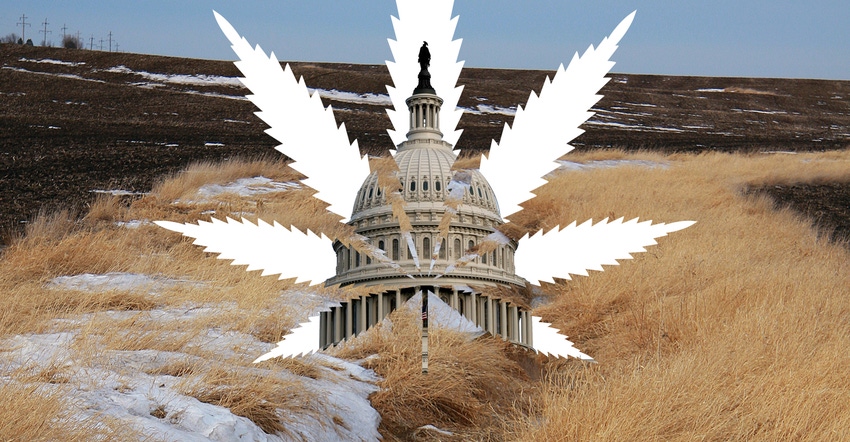
Even before the U.S. Senate Agriculture Committee took up writing its version of the 2018 Farm Bill, key elements of the bill were already proposed as stand-alone pieces of legislation by influential ag committee members. That includes Senate Majority Leader Mitch McConnell, R-Ky.; Sherrod Brown, D-Ohio; Bob Casey, D-Pa.; Joni Ernst, R-Iowa; and Chuck Grassley, R-Iowa. They’ll likely be key bricks in the 2018 Farm Bill’s foundation.
In the 2014 Farm Bill, McConnell had previously opened the gate to legalize state-run research and market development programs for industrial hemp. In 2017, 19 states had research or pilot projects underway, according to Vote Hemp, a non-profit advocacy group. Some 34 states had removed barriers to the R&D projects.
“Now we need to make industrial hemp production legal," McConnell says. "And that’s what we intend to do in this year’s farm bill.” In brief, non-psychoactive cannabis varieties (hemp) would be removed from the Controlled Substances Act's definition of marijuana.
GROW Act targets conservation
The “Give our Resources the Opportunity to Work Act of 2018”, introduced by Brown, Casey, Ernst and Grassley, targets the farm bill’s conservation title. As written, “The next farm bill must focus our limited conservation dollars on the most environmentally sensitive lands, help farmers and ranchers achieve better soil health and water quality, and improve access to land and USDA resources for young and beginning farmers,” Casey says. “This bill does that.” Here’s what’s inside it:
The bill makes reforms to the Conservation Reserve Program, the Conservation Stewardship Program, and the Environmental Quality Incentives Program. Together, they account for 90% of conservation spending. Here’s what’s inside the GROW Act:
• Directs USDA to enroll 4 million acres in CRP practices directly benefitting water quality.
• Establishes a new CLEAR (Clean Lakes, Estuaries, and Rivers) option within continuous CRP.
• Directs more resources to targeted, partial field practices improving water quality, such as riparian buffers and filter strips.
• Maintains annual enrollment for CSP and funding for EQIP.
• Levels the playing field for beginning farmers looking to access farmland by limiting general sign-up CRP rental rates.
• Promotes grazing and land conservation by expanding the CRP Grasslands Initiative to 3 million acres.
• Increases CSP incentives for cover crops and managed intensive rotational grazing.
• Helps young and beginning farmers access EQIP by providing additional dollars up front to help with cash flow.
• Makes most prime farmland and class I, II, and III land ineligible for CRP enrollment.
• Maintains CRP at 24 million acres and precludes whole farm enrollment.
• Limits how much county cropland can be enrolled in CRP.
• Directs USDA to submit a report on land access, tenure and transition.
About the Author(s)
You May Also Like




